

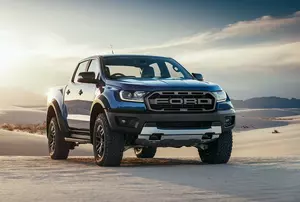
2019 Ranger III Raptor (facelift 2019)
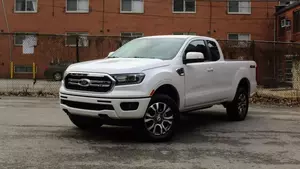
2019 Ranger III Super Cab (facelift 2019)
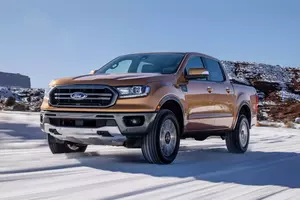
2019 Ranger III Double Cab (facelift 2019)
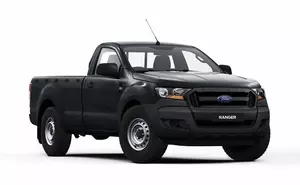
2019 Ranger III Regular Cab (facelift 2019)
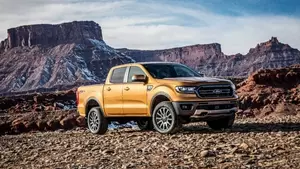
2019 Ranger IV SuperCrew (Americas)
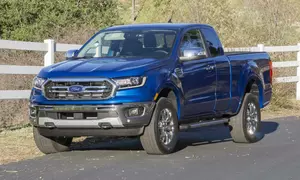
2019 Ranger IV SuperCab (Americas)
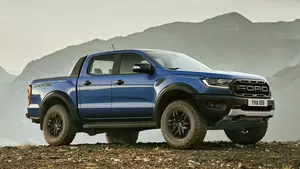
2019 Ranger IV Raptor (Americas)

2015 Ranger III Double Cab (facelift 2015)
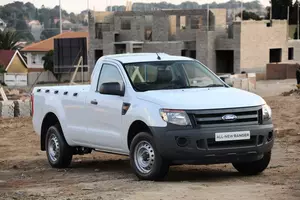
2015 Ranger III Single Cab (facelift 2015)
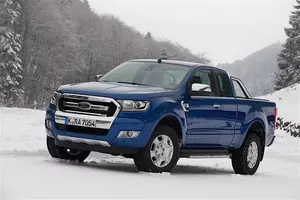
2015 Ranger III Super Cab (facelift 2015)
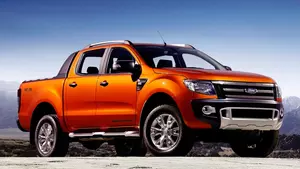
Ranger III Double Cab
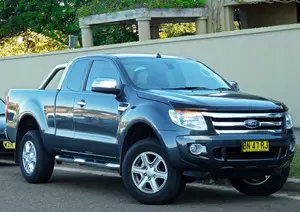
Ranger III Super Cab
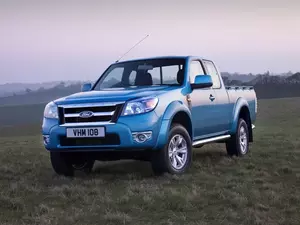
2009 Ranger II Super Cab (facelift 2009)
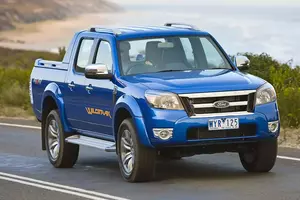
2009 Ranger II Double Cab (facelift 2009)
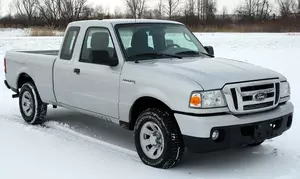
2006 Ranger II Super Cab
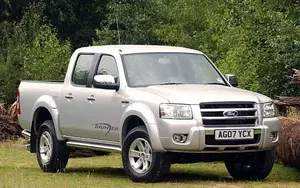
2006 Ranger II Double Cab

Ranger I Super Cab
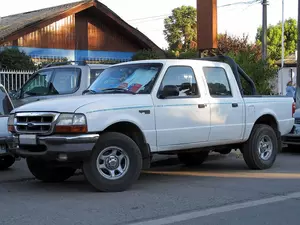
Ranger I Double Cab
| Vehicle | Fuel tank size | Max driving range | Fuel consumption per 10 km | Fuel type | Full tanks per 5000 miles |
|---|---|---|---|---|---|
| 2.0 EcoBlue | 80 L (18 gal) | - | 0.9 L | Diesel | - |
| Vehicle | 2.0 EcoBlue |
|---|---|
| Fuel tank size | 80 L (18 gal) |
| Max driving range | - |
| Fuel consumption per 10 km | 0.9 L |
| Fuel type | Diesel |
| Full tanks per 5000 miles | - |
| Vehicle | Fuel tank size | Max driving range | Fuel consumption per 10 km | Fuel type | Full tanks per 5000 miles |
|---|---|---|---|---|---|
| 2.0 EcoBlue | 80 L (18 gal) | - | 0.7 L | Diesel | - |
| Vehicle | 2.0 EcoBlue |
|---|---|
| Fuel tank size | 80 L (18 gal) |
| Max driving range | - |
| Fuel consumption per 10 km | 0.7 L |
| Fuel type | Diesel |
| Full tanks per 5000 miles | - |
| Vehicle | Fuel tank size | Max driving range | Fuel consumption per 10 km | Fuel type | Full tanks per 5000 miles |
|---|---|---|---|---|---|
| 2.0 EcoBlue | 80 L (18 gal) | - | 0.8 L | Diesel | - |
| 3.2 Duratorq TDCi | 80 L (18 gal) | - | 1 L | Diesel | - |
| Vehicle | 2.0 EcoBlue |
|---|---|
| Fuel tank size | 80 L (18 gal) |
| Max driving range | - |
| Fuel consumption per 10 km | 0.8 L |
| Fuel type | Diesel |
| Full tanks per 5000 miles | - |
| Vehicle | 3.2 Duratorq TDCi |
| Fuel tank size | 80 L (18 gal) |
| Max driving range | - |
| Fuel consumption per 10 km | 1 L |
| Fuel type | Diesel |
| Full tanks per 5000 miles | - |
| Vehicle | Fuel tank size | Max driving range | Fuel consumption per 10 km | Fuel type | Full tanks per 5000 miles |
|---|---|---|---|---|---|
| 2.0 EcoBlue | 80 L (18 gal) | - | 0.7 L | Diesel | - |
| Vehicle | 2.0 EcoBlue |
|---|---|
| Fuel tank size | 80 L (18 gal) |
| Max driving range | - |
| Fuel consumption per 10 km | 0.7 L |
| Fuel type | Diesel |
| Full tanks per 5000 miles | - |
| Vehicle | Fuel tank size | Max driving range | Fuel consumption per 10 km | Fuel type | Full tanks per 5000 miles |
|---|---|---|---|---|---|
| 2.3 EcoBoost | 68 L (15 gal) |
579 km (360 miles) |
1.1 L | Petrol (Gasoline) | 13.9 |
| Vehicle | 2.3 EcoBoost |
|---|---|
| Fuel tank size | 68 L (15 gal) |
| Max driving range |
579 km (360 miles) |
| Fuel consumption per 10 km | 1.1 L |
| Fuel type | Petrol (Gasoline) |
| Full tanks per 5000 miles | 13.9 |
| Vehicle | Fuel tank size | Max driving range | Fuel consumption per 10 km | Fuel type | Full tanks per 5000 miles |
|---|---|---|---|---|---|
| 2.3 EcoBoost | 68 L (15 gal) |
579 km (360 miles) |
1.1 L | Petrol (Gasoline) | 13.9 |
| Vehicle | 2.3 EcoBoost |
|---|---|
| Fuel tank size | 68 L (15 gal) |
| Max driving range |
579 km (360 miles) |
| Fuel consumption per 10 km | 1.1 L |
| Fuel type | Petrol (Gasoline) |
| Full tanks per 5000 miles | 13.9 |
| Vehicle | Fuel tank size | Max driving range | Fuel consumption per 10 km | Fuel type | Full tanks per 5000 miles |
|---|---|---|---|---|---|
| 2.0d | 80 L (18 gal) | - | 0.8 L | Diesel | - |
| Vehicle | 2.0d |
|---|---|
| Fuel tank size | 80 L (18 gal) |
| Max driving range | - |
| Fuel consumption per 10 km | 0.8 L |
| Fuel type | Diesel |
| Full tanks per 5000 miles | - |
| Vehicle | Fuel tank size | Max driving range | Fuel consumption per 10 km | Fuel type | Full tanks per 5000 miles |
|---|---|---|---|---|---|
| 2.2 TDCi | 80 L (18 gal) |
973 km (605 miles) |
0.8 L | Diesel | 8.3 |
| 3.2 TDCi | 80 L (18 gal) |
920 km (572 miles) |
0.9 L | Diesel | 8.7 |
| Vehicle | 2.2 TDCi |
|---|---|
| Fuel tank size | 80 L (18 gal) |
| Max driving range |
973 km (605 miles) |
| Fuel consumption per 10 km | 0.8 L |
| Fuel type | Diesel |
| Full tanks per 5000 miles | 8.3 |
| Vehicle | 3.2 TDCi |
| Fuel tank size | 80 L (18 gal) |
| Max driving range |
920 km (572 miles) |
| Fuel consumption per 10 km | 0.9 L |
| Fuel type | Diesel |
| Full tanks per 5000 miles | 8.7 |
| Vehicle | Fuel tank size | Max driving range | Fuel consumption per 10 km | Fuel type | Full tanks per 5000 miles |
|---|---|---|---|---|---|
| 2.2 TDCi | 80 L (18 gal) | - | 0.8 L | Diesel | - |
| 3.2 TDCi | 80 L (18 gal) | - | 0.8 L | Diesel | - |
| 2.5 | 80 L (18 gal) | - | - | Petrol (Gasoline) | - |
| Vehicle | 2.2 TDCi |
|---|---|
| Fuel tank size | 80 L (18 gal) |
| Max driving range | - |
| Fuel consumption per 10 km | 0.8 L |
| Fuel type | Diesel |
| Full tanks per 5000 miles | - |
| Vehicle | 3.2 TDCi |
| Fuel tank size | 80 L (18 gal) |
| Max driving range | - |
| Fuel consumption per 10 km | 0.8 L |
| Fuel type | Diesel |
| Full tanks per 5000 miles | - |
| Vehicle | 2.5 |
| Fuel tank size | 80 L (18 gal) |
| Max driving range | - |
| Fuel consumption per 10 km | - |
| Fuel type | Petrol (Gasoline) |
| Full tanks per 5000 miles | - |
| Vehicle | Fuel tank size | Max driving range | Fuel consumption per 10 km | Fuel type | Full tanks per 5000 miles |
|---|---|---|---|---|---|
| 3.2 TDCi | 80 L (18 gal) |
933 km (580 miles) |
0.9 L | Diesel | 8.6 |
| 2.2 TDCi | 80 L (18 gal) |
1047 km (651 miles) |
0.7 L | Diesel | 7.7 |
| Vehicle | 3.2 TDCi |
|---|---|
| Fuel tank size | 80 L (18 gal) |
| Max driving range |
933 km (580 miles) |
| Fuel consumption per 10 km | 0.9 L |
| Fuel type | Diesel |
| Full tanks per 5000 miles | 8.6 |
| Vehicle | 2.2 TDCi |
| Fuel tank size | 80 L (18 gal) |
| Max driving range |
1047 km (651 miles) |
| Fuel consumption per 10 km | 0.7 L |
| Fuel type | Diesel |
| Full tanks per 5000 miles | 7.7 |
| Vehicle | Fuel tank size | Max driving range | Fuel consumption per 10 km | Fuel type | Full tanks per 5000 miles |
|---|---|---|---|---|---|
| 2.2 TDCi | 80 L (18 gal) |
946 km (588 miles) |
0.8 L | Diesel | 8.5 |
| 2.5 | 80 L (18 gal) |
766 km (476 miles) |
1.1 L | Petrol (Gasoline) | 10.5 |
| 3.2 TDCi | 80 L (18 gal) |
766 km (476 miles) |
1 L | Diesel | 10.5 |
| Vehicle | 2.2 TDCi |
|---|---|
| Fuel tank size | 80 L (18 gal) |
| Max driving range |
946 km (588 miles) |
| Fuel consumption per 10 km | 0.8 L |
| Fuel type | Diesel |
| Full tanks per 5000 miles | 8.5 |
| Vehicle | 2.5 |
| Fuel tank size | 80 L (18 gal) |
| Max driving range |
766 km (476 miles) |
| Fuel consumption per 10 km | 1.1 L |
| Fuel type | Petrol (Gasoline) |
| Full tanks per 5000 miles | 10.5 |
| Vehicle | 3.2 TDCi |
| Fuel tank size | 80 L (18 gal) |
| Max driving range |
766 km (476 miles) |
| Fuel consumption per 10 km | 1 L |
| Fuel type | Diesel |
| Full tanks per 5000 miles | 10.5 |
| Vehicle | Fuel tank size | Max driving range | Fuel consumption per 10 km | Fuel type | Full tanks per 5000 miles |
|---|---|---|---|---|---|
| 2.5 | 80 L (18 gal) |
766 km (476 miles) |
1.1 L | Petrol (Gasoline) | 10.5 |
| 2.2 TDCi | 80 L (18 gal) |
851 km (529 miles) |
0.9 L | Diesel | 9.5 |
| 3.2 TDCi | 80 L (18 gal) |
842 km (523 miles) |
1 L | Diesel | 9.6 |
| Vehicle | 2.5 |
|---|---|
| Fuel tank size | 80 L (18 gal) |
| Max driving range |
766 km (476 miles) |
| Fuel consumption per 10 km | 1.1 L |
| Fuel type | Petrol (Gasoline) |
| Full tanks per 5000 miles | 10.5 |
| Vehicle | 2.2 TDCi |
| Fuel tank size | 80 L (18 gal) |
| Max driving range |
851 km (529 miles) |
| Fuel consumption per 10 km | 0.9 L |
| Fuel type | Diesel |
| Full tanks per 5000 miles | 9.5 |
| Vehicle | 3.2 TDCi |
| Fuel tank size | 80 L (18 gal) |
| Max driving range |
842 km (523 miles) |
| Fuel consumption per 10 km | 1 L |
| Fuel type | Diesel |
| Full tanks per 5000 miles | 9.6 |
| Vehicle | Fuel tank size | Max driving range | Fuel consumption per 10 km | Fuel type | Full tanks per 5000 miles |
|---|---|---|---|---|---|
| 2.5 TDCi | 70 L (15 gal) | - | - | Diesel | - |
| Vehicle | 2.5 TDCi |
|---|---|
| Fuel tank size | 70 L (15 gal) |
| Max driving range | - |
| Fuel consumption per 10 km | - |
| Fuel type | Diesel |
| Full tanks per 5000 miles | - |
| Vehicle | Fuel tank size | Max driving range | Fuel consumption per 10 km | Fuel type | Full tanks per 5000 miles |
|---|---|---|---|---|---|
| 2.5 TDCi | 70 L (15 gal) | - | - | Diesel | - |
| Vehicle | 2.5 TDCi |
|---|---|
| Fuel tank size | 70 L (15 gal) |
| Max driving range | - |
| Fuel consumption per 10 km | - |
| Fuel type | Diesel |
| Full tanks per 5000 miles | - |
| Vehicle | Fuel tank size | Max driving range | Fuel consumption per 10 km | Fuel type | Full tanks per 5000 miles |
|---|---|---|---|---|---|
| 2.3 | 70 L (15 gal) | - | - | Petrol (Gasoline) | - |
| 4.0 V6 | 70 L (15 gal) | - | - | Petrol (Gasoline) | - |
| 3.0 TDCi | 70 L (15 gal) |
637 km (396 miles) |
1 L | Diesel | 12.6 |
| 2.5 TDCi | 70 L (15 gal) |
727 km (452 miles) |
0.9 L | Diesel | 11.1 |
| Vehicle | 2.3 |
|---|---|
| Fuel tank size | 70 L (15 gal) |
| Max driving range | - |
| Fuel consumption per 10 km | - |
| Fuel type | Petrol (Gasoline) |
| Full tanks per 5000 miles | - |
| Vehicle | 4.0 V6 |
| Fuel tank size | 70 L (15 gal) |
| Max driving range | - |
| Fuel consumption per 10 km | - |
| Fuel type | Petrol (Gasoline) |
| Full tanks per 5000 miles | - |
| Vehicle | 3.0 TDCi |
| Fuel tank size | 70 L (15 gal) |
| Max driving range |
637 km (396 miles) |
| Fuel consumption per 10 km | 1 L |
| Fuel type | Diesel |
| Full tanks per 5000 miles | 12.6 |
| Vehicle | 2.5 TDCi |
| Fuel tank size | 70 L (15 gal) |
| Max driving range |
727 km (452 miles) |
| Fuel consumption per 10 km | 0.9 L |
| Fuel type | Diesel |
| Full tanks per 5000 miles | 11.1 |
| Vehicle | Fuel tank size | Max driving range | Fuel consumption per 10 km | Fuel type | Full tanks per 5000 miles |
|---|---|---|---|---|---|
| 2.5 TDCi | 60 L (13 gal) | - | - | Diesel | - |
| 4.0 V6 | 64 L (14 gal) | - | - | Petrol (Gasoline) | - |
| 2.3 | 64 L (14 gal) | - | - | Petrol (Gasoline) | - |
| 3.0 TDCi | 70 L (15 gal) |
637 km (396 miles) |
1 L | Diesel | 12.6 |
| Vehicle | 2.5 TDCi |
|---|---|
| Fuel tank size | 60 L (13 gal) |
| Max driving range | - |
| Fuel consumption per 10 km | - |
| Fuel type | Diesel |
| Full tanks per 5000 miles | - |
| Vehicle | 4.0 V6 |
| Fuel tank size | 64 L (14 gal) |
| Max driving range | - |
| Fuel consumption per 10 km | - |
| Fuel type | Petrol (Gasoline) |
| Full tanks per 5000 miles | - |
| Vehicle | 2.3 |
| Fuel tank size | 64 L (14 gal) |
| Max driving range | - |
| Fuel consumption per 10 km | - |
| Fuel type | Petrol (Gasoline) |
| Full tanks per 5000 miles | - |
| Vehicle | 3.0 TDCi |
| Fuel tank size | 70 L (15 gal) |
| Max driving range |
637 km (396 miles) |
| Fuel consumption per 10 km | 1 L |
| Fuel type | Diesel |
| Full tanks per 5000 miles | 12.6 |
| Vehicle | Fuel tank size | Max driving range | Fuel consumption per 10 km | Fuel type | Full tanks per 5000 miles |
|---|---|---|---|---|---|
| 2.5 TDCi | 70 L (15 gal) | - | - | Diesel | - |
| 3.0 V6 | 62 L (14 gal) | - | - | Petrol (Gasoline) | - |
| 4.0 V6 | 95 L (21 gal) | - | - | Petrol (Gasoline) | - |
| 2.3 | 62 L (14 gal) | - | - | Petrol (Gasoline) | - |
| Vehicle | 2.5 TDCi |
|---|---|
| Fuel tank size | 70 L (15 gal) |
| Max driving range | - |
| Fuel consumption per 10 km | - |
| Fuel type | Diesel |
| Full tanks per 5000 miles | - |
| Vehicle | 3.0 V6 |
| Fuel tank size | 62 L (14 gal) |
| Max driving range | - |
| Fuel consumption per 10 km | - |
| Fuel type | Petrol (Gasoline) |
| Full tanks per 5000 miles | - |
| Vehicle | 4.0 V6 |
| Fuel tank size | 95 L (21 gal) |
| Max driving range | - |
| Fuel consumption per 10 km | - |
| Fuel type | Petrol (Gasoline) |
| Full tanks per 5000 miles | - |
| Vehicle | 2.3 |
| Fuel tank size | 62 L (14 gal) |
| Max driving range | - |
| Fuel consumption per 10 km | - |
| Fuel type | Petrol (Gasoline) |
| Full tanks per 5000 miles | - |
| Vehicle | Fuel tank size | Max driving range | Fuel consumption per 10 km | Fuel type | Full tanks per 5000 miles |
|---|---|---|---|---|---|
| 2.5 TDCi | 70 L (15 gal) | - | - | Diesel | - |
| Vehicle | 2.5 TDCi |
|---|---|
| Fuel tank size | 70 L (15 gal) |
| Max driving range | - |
| Fuel consumption per 10 km | - |
| Fuel type | Diesel |
| Full tanks per 5000 miles | - |